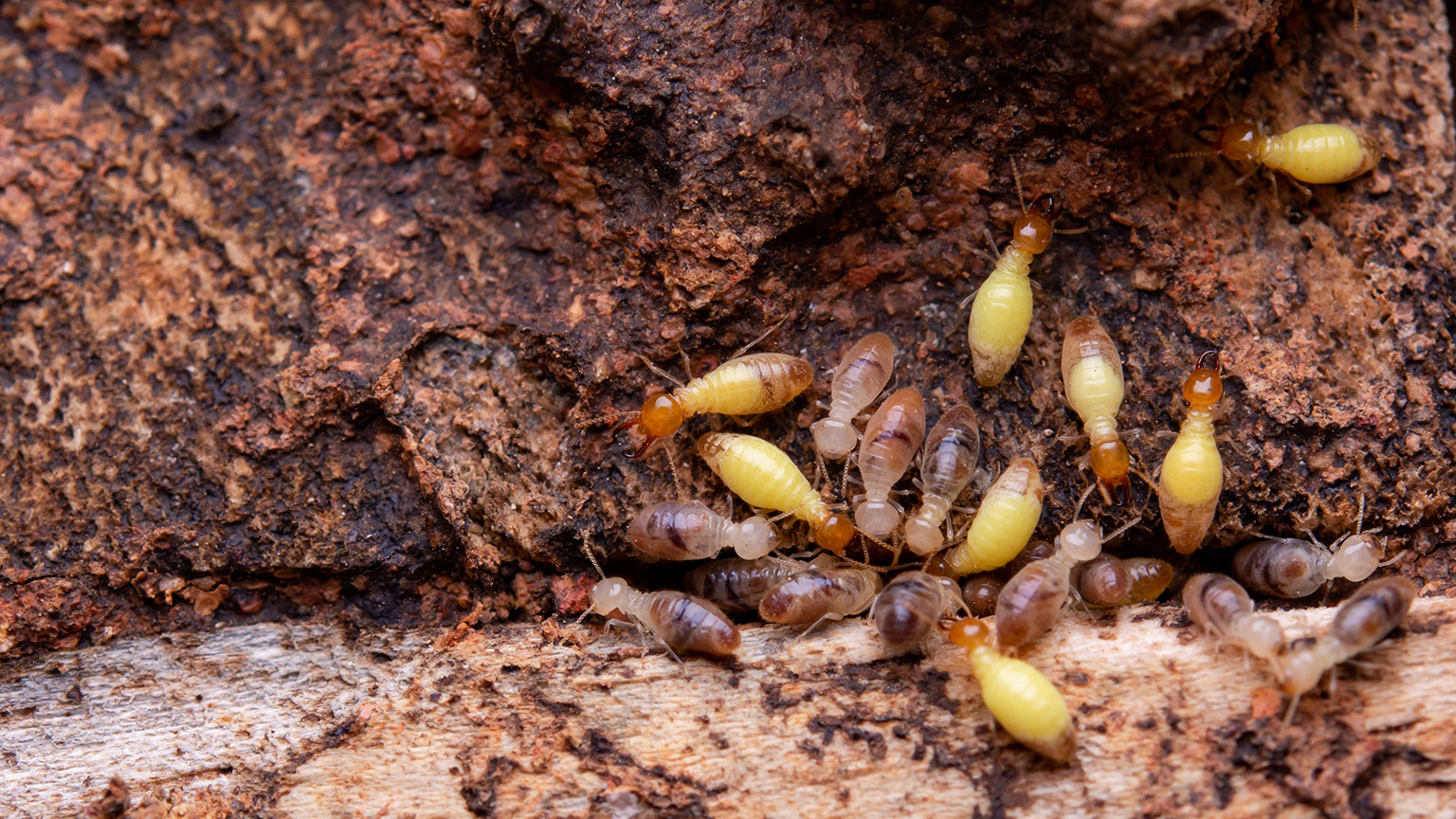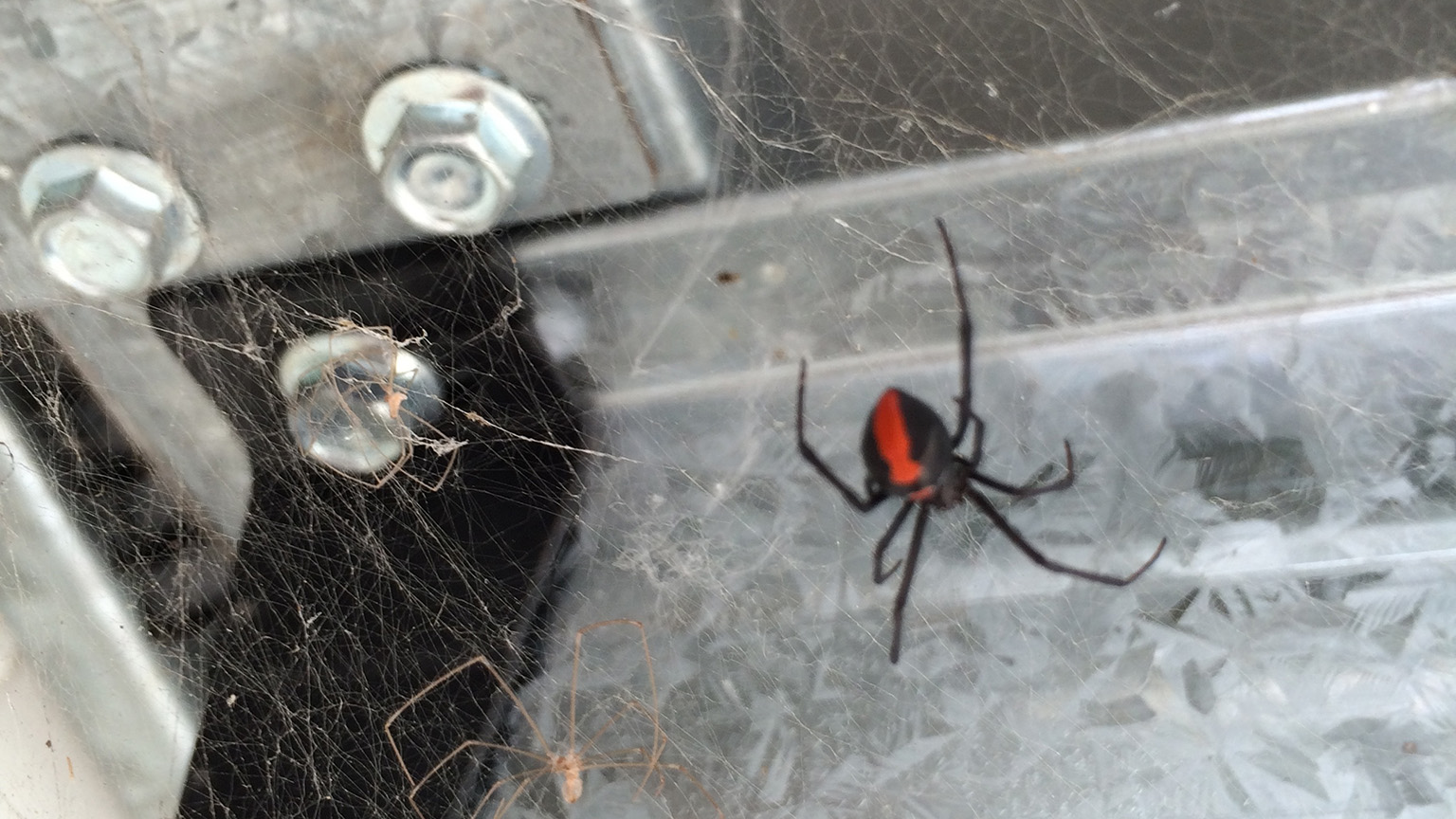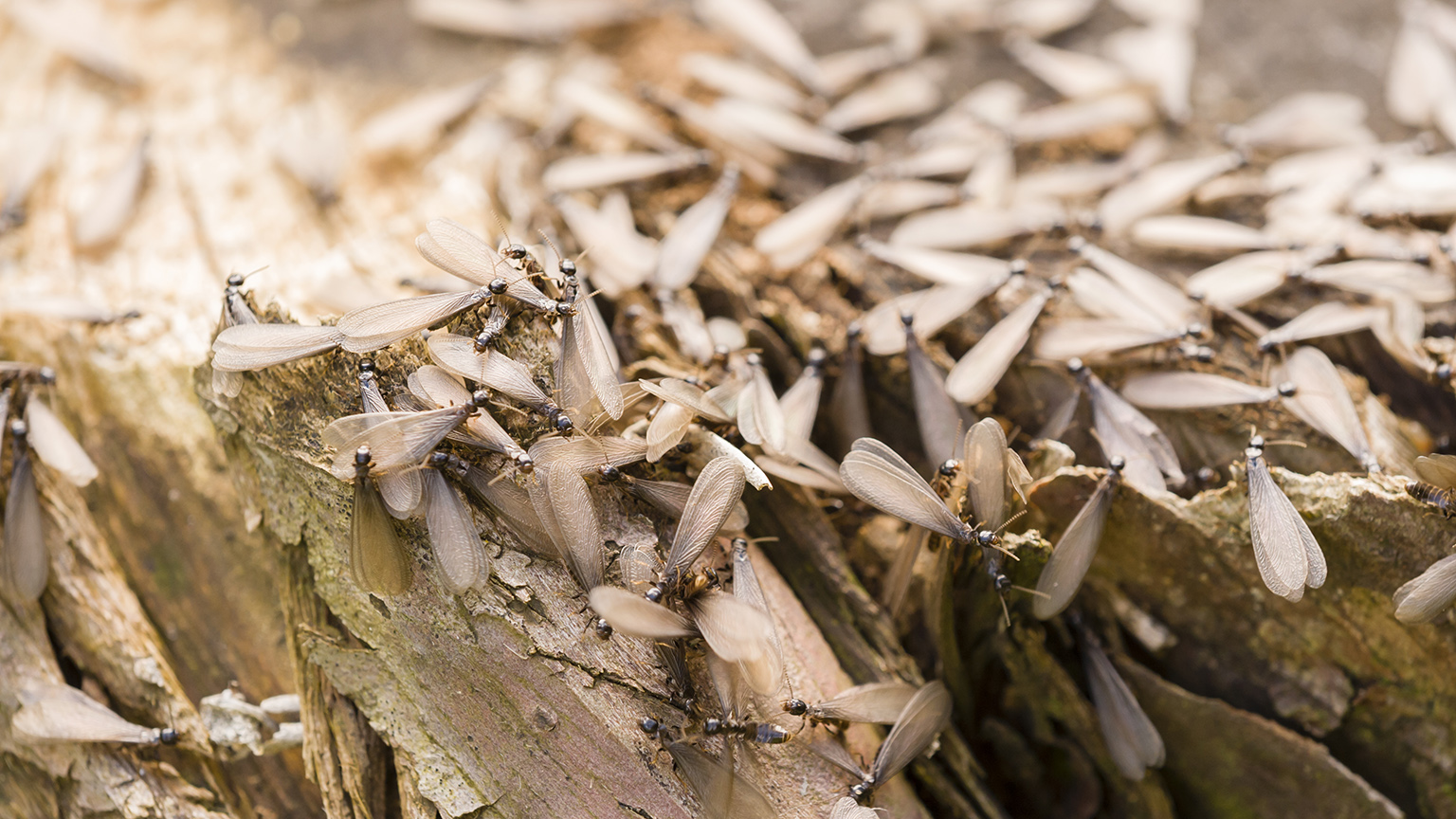Updated: March 6, 2024
Australia is home to a wide variety of spiders, and although not all spiders are venomous, some do have the ability to cause serious side effects that require either first aid treatment or a hospital visit. It’s important to us that you feel safe and comfortable in your home!
We thought up the idea for this blog post after one of our North Lakes’ pest control customers pointed at a Saint Andrew’s Cross Spider in her garden and said “What’s that?” After we told our customer what kind of spider it was, she said, “I went to google it, but didn’t know what to google.” So here we are!
This post will help you identify Australian spiders along the Sunshine Coast to North Brisbane with a spider identification chart. The chart lists spiders from the least venomous to the most venomous.
Australian Spider Identification Chart
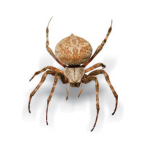
Garden Orb-Weaver Spider (Eriophora transmarina)
Spider Identification: These spiders are known for their large abdomen that has a leaf like pattern. They can be white, dark brown, or black. Males bodies range from 15-20 mm, while female bodies range between 15-17 mm.
Habitat: These spiders can be found around homes, between lights and trees, and will hide under rocks or leaves to stay out of site.
Toxicity: These spiders are low in toxicity to humans and pets, but their bites may cause some pain, swelling, and redness.
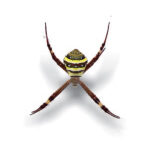
Saint Andrew’s Cross Spider (Argiope keyserlingi)
Spider Identification: This spider is easily identified by the X-shaped cross displayed on their webs. Females can grow between 10-16 mm and sport a bright yellow abdomen while males grow between 3-4 mm and are usually brown or cream coloured.
Habitat: You will usually find this spider in your garden among the leaves.
Toxicity: These spiders are low in toxicity to humans and pets. They are timid and will only bite if provoked.
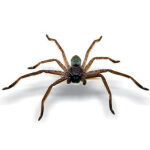
Huntsman Spider (Heteropoda sp.)
Spider Identification: These spiders are large with a leg span that can reach up to 160 mm. They come in a variety of colours and patterns but are usually brown, grey, or black — sometimes even white with little red patches over their mouths. These spiders have two back pairs of legs shorter than the front helping them to walk forward and sideways — similar to a crab.
Habitat: They’re usually found in forest like areas, under woodpiles, or near wood shacks.
Toxicity: These spiders are venomous and can cause allergic reactions in rare cases to young children and pets if bitten. However, they are timid and will usually only bite if provoked.
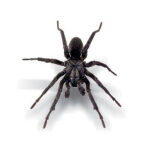
Male Trapdoor Spider (Euoplos sp. , Arbinitis sp.)
Spider Identification: These spiders can grow between 15-30 mm with colours ranging from brown to black. They are stubby with little hairs covering their entire body. Males have a double spur about halfway along their front legs and what can be described as small boxing gloves near their jaws.
Habitat: These spiders can be found wandering around your garden more than females because they’re looking to mate. They like warm environments and will burrow in grassy areas, hillsides, and dirt embankments.
Toxicity: Bites are low toxicity to humans and pets, but can cause localised pain and swelling.
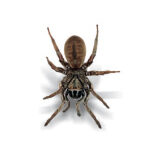
Female Trapdoor Spider (Euoplos sp. , Arbinitis sp.)
Spider Identification: Female Trapdoor spiders are larger than males.
Habitat: Females are rarely seen wandering outside of their burrows, so if you do come across a Trapdoor spider it is most likely male.
Toxicity: Bites are low in toxicity to humans and pets, but can cause localised pain and swelling.
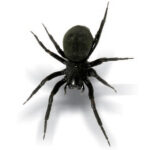
Common Black House Spider (Badumna insignis)
Spider Identification: House spiders’ have dark brown or black legs with charcoal grey abdomens sometimes showing a dorsal pattern of light markings. Females can grow up to 18 mm with a 30 mm leg span. Whereas males grow to be only 10 mm but with a larger leg span in comparison to their size.
Habitat: Like their name, they are found in the home usually in cornices, around windows, or in doorways. They rarely leave their locations so webs are usually quite messy and look tangled.
Toxicity: Their bites are low toxicity to humans and pets, but localised swelling, nausea, vomiting, and sweating can occur.
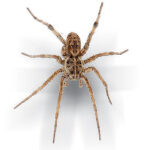
Wolf Spider (Lycosa sp.)
Spider Identification: Wolf spiders range in size and are usually brown with yellow, grey, black, or white patterns of lines across their abdomen.
Habitat: They are typically found in and around the garden under a silk lined burrow or loose leafs.
Toxicity: These spiders are mildly toxic to humans and pets. Their bites are painful and can cause swelling, prolonged pain, itchiness, dizziness, and nausea.
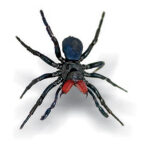
Male Mouse Spider (Missulena sp.)
Spider Identification: Male bodies are black, stout, and can vary from 10 mm to 35 mm in length while their legs appear quite thin. They can sometimes have a bright red or an orange-red jaw region.
Habitat: Males can be spotted more often than females around backyards in search of a mate (usually during rainy summer nights), and in gardens in small burrows. These burrows are usually closed by a trapdoor and can have parts of silk strewn out around the entrance that warn them of incoming prey. They are rarely seen east of the dividing range, but mountain ranges can be an exception.
Toxicity: Their bites are toxic to humans and pets, but are thought to use less venom or “dry bite” their victims.
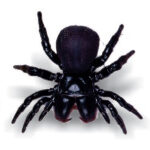
Female Mouse Spider (Missulena sp.)
Spider Identification: Females are bigger than males with an entirely black body.
Habitat: They’re usually found in backyards and gardens in small burrows similar to males but rarely leave their burrows. They are rarely seen east of the dividing range, but mountain ranges can be an exception.
Toxicity: Their bites are toxic to humans and pets, but are thought to use less venom or “dry bite” their victims.
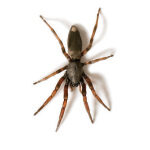
White Tail Spider (Lampona sp.)
Spider Identification: These spiders are most known for their whitish tip at the end of their abdomens. Their bodies are quite slender and can be as big as 18 mm with a leg span of 28 mm. They are usually dark reddish or grey in colour.
Habitat: They can be found both inside and outside your home either under rocks and leaves, or in the folds of clothes, towels, and inside shoes.
Toxicity: These spiders are mildly toxic to humans and pets. Their bites may cause a small red or discoloured bump, swelling, itching, or burning on your skin.
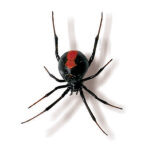
Redback Spider (Latrodectus hasselti)
Spider Identification: Also known as the Australian Black Widow. The female redback has a black 1 cm body with a red (sometimes orange) stripe on their abdomen. The males are smaller and have either white or light brown markings along the upper side of their abdomen.
Habitat: They’re mostly nocturnal spiders that remain hidden during the day. Their webs can usually be found among rocks, in logs, shrubs, sheds, or toilets.
Toxicity: Redbacks are quite venomous and their bites may cause severe pain, localized sweating, muscular weakness, nausea, and vomiting. Be wary of anaphylaxis after being bitten by this spider. Paralysis of the lower limbs is common in severe instances.
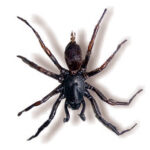
Male Funnel Web Spider (Hadronyche infensa)
Spider Identification: These spiders’ bodies can be as long as 1-5 cm and are usually either black or brown. The front part of their body is usually quite glossy with less hair than the back. Males have a large mating spur located between their second pair of legs.
Habitat: These spiders are rare throughout the Sunshine Coast although they can be found in mountain regions such as Montville and Buderim. They can be found in gardens, burrowed somewhere moist and cool. It’s common to find their burrows under rocks or in deep shrubbery. Males find themselves wandering inside homes and garages with concrete slab foundations.
Toxicity: These spiders are extremely toxic to humans and pets. Their bites result in puncture marks and localised bleeding. Symptoms such as goosebumps, sweating, and tingling around the mouth can happen within minutes.
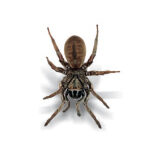
Female Funnel Web Spider (Hadronyche infensa)
Spider Identification: Their bodies can be as long as 1-5 cm and are usually either black or brown. The front part of their body is usually quite glossy with less hair than the back. Females are more heavily built than males.
Habitat: They can be found in and around your gardens, burrowed somewhere moist and cool. Females rarely leave their burrows, so it’s more common to see males wandering around.
Toxicity: These spiders are extremely toxic to humans and pets. Their bites result in puncture marks and localised bleeding. Symptoms such as goosebumps, sweating, and tingling around the mouth can happen within minutes.
Good luck with your spider spotting and remember to stay safe. If you or someone you know has been bitten by one of these spiders we recommend following St. John’s DRSABCD method.
For more information on how to get rid of spiders in your home, visit our blog.
